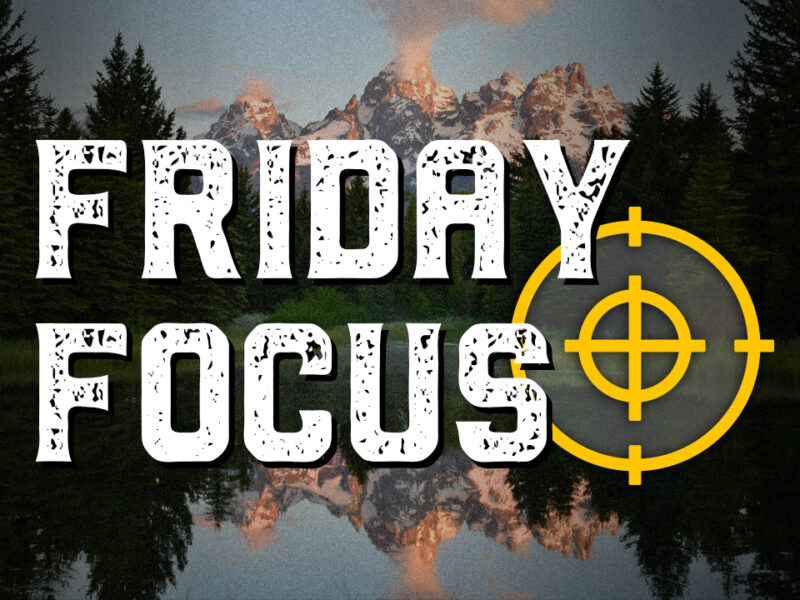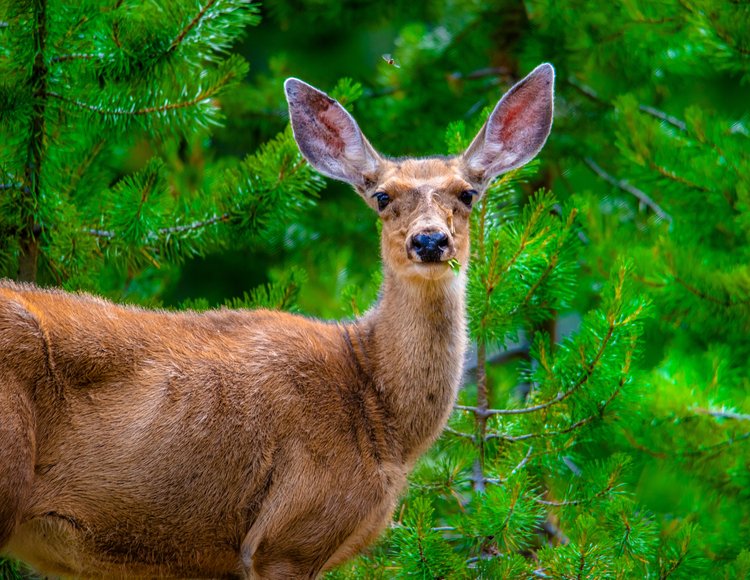Wyoming Game & Fish Discuss Wildlife Management, Safety Tips
The agency offers insights as hunting season approaches and the public soaks in the state’s natural landscapes
- Published In: Other News & Features
- Last Updated: Aug 26, 2022

By Shen Wu Tan
Special to the Wyoming Truth
As outdoor enthusiasts enjoy the Cowboy State’s natural landscapes and the hunting season approaches, the Wyoming Game and Fish Department shared insights about its wildlife management program.
The department is charged with managing habitats and wildlife, such as bighorn sheep, bison, deer, bears, fish and sage grouse. Its history dates back to 1869 when the first territorial legislature created the “Act for Protection of Game and Fish” in Wyoming in response to slaughter of game and declining wildlife populations. The Wyoming Game and Fish Department was officially founded in 1973.
Earlier this month, the department opened new hunting access areas in Converse and Sweetwater counties. It is also working on the first of nine highway underpasses in western Wyoming aimed at decreasing the number of wildlife-vehicle crashes. The Dry Piney wildlife crossing project will stretch along Highway 189, which has one of the highest wildlife-car collision rates in Wyoming; it is set to be complete by October 2023.
The Wyoming Game and Fish Department this month urged the public to take precautions when hunting and fishing. The agency will even be distributing free bear spray to hunters and anglers at different locations throughout the state.

The Wyoming Truth spoke with the department about animal management and precautionary measures for visiting natural areas with wildlife. What follows are excerpts from the interview.
How many animal relocations have occurred so far in Wyoming this year?
WY Game & Fish: Wyoming Game and Fish Department relocates all types of wildlife for a variety of reasons. Given this, our personnel do not track each of these relocations or movements. Grizzly bears are relocated in accordance with state and federal law and regulation, and Game and Fish is required to notify the media whenever a grizzly bear is relocated. A cumulative report of these relocations is published annually on the Game and Fish website.
Why do you relocate animals?
WY Game & Fish: Wildlife may be relocated due to conflicts, such as a grizzly bear preying on livestock, nuisance behavior like a beaver on private land that is damming up crucial irrigation or even wildlife that end up in town, like a moose that wanders into a city like Cheyenne. In all these examples, wildlife is relocated to a location with more suitable habitat. Not all wildlife can be relocated in conflict situations — each is evaluated on a case-by-case basis.
There have been a number reports about bison attacking people in Yellowstone this summer. Why does this happen?
WY Game & Fish: All wild animals can be unpredictable. Getting too close to wildlife may spur a reaction due to the animal feeling threatened or protective if they are near a food source or young. Animals don’t know that you don’t intend them any harm, and if they feel threatened, can react to protect themselves. Especially in the backcountry, surprising wildlife may also lead to a conflict encounter.
How many wildlife attacks in Wyoming have happened so far?
WY Game & Fish: The number of wildlife/human interactions that may result in injuries is difficult to fully quantify. Game and Fish does not know about or track each instance of wildlife conflicts with humans, but we are aware of cases that are reported to the department — such as a moose/human encounter in Jackson this year. The department does track instances of large carnivore conflicts that result in human injury. In 2022, Game and Fish investigated one verified human injury from a grizzly bear. This low number of reports and investigations is typical.
Wildlife encounters with humans are rare, and wildlife do not commonly attack humans. Occasionally there will be an incident or a surprise encounter that leads to human injury. Hundreds of thousands of people view wildlife safely in Wyoming each year without conflict.
Is the department trying to manage any endangered species?
WY Game & Fish: Game and Fish works in collaboration with the US Fish and Wildlife Service to manage endangered species in Wyoming, such as grizzly bears and the Wyoming toad. The department’s efforts are focused on using our expertise for species recovery and resuming state management of all recovered species. One example of this success is the gray wolf, as well as grizzly bears, which are fully recovered. Wyoming is currently petitioning to resume state management of grizzly bears.

How does the department handle an overabundance of a species of animal?
WY Game & Fish: Game and Fish manages trophy game and big game species toward a management objective. These species of wildlife are managed through habitat improvement and with the public using hunting. Hunting quotas are set annually with the goal of reaching the management objective.
What safety tips do you have for people visiting state parks or other areas with wildlife?
· Give all wild animals plenty of space, even more than what you think.
· Never crowd or surround an animal and always allow the animal an escape route.
· Carry equipment that can help them watch wildlife from a distance like binoculars or a zooming camera. View and photograph animals from a distance.
· Talk to kids about not approaching or touching wildlife, including the young tucked away for safety in the early days of spring.
· Always control pets while walking them and make sure there [is] no wildlife around before letting animals out of the house.
· Watch for changes in body language from wildlife. It might lift its head, tilt its ears forward, stomp its feet or vocalize. Indications will also differ across individuals and across species.
· Stay alert for signs of wildlife around you and make noise so you aren’t surprising them — or they aren’t surprising you.
· Be bear safe. Store attractants like food, barbecue grills and pet food to prevent encounters with bears.
· Do not feed wildlife.
· Carry and know how to use bear spray. Even though most people will never have to use bear spray, it can save the lives of those who do.













